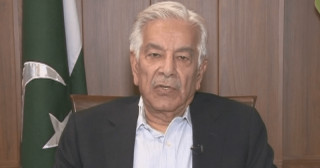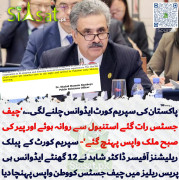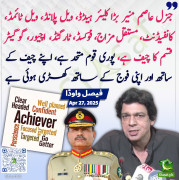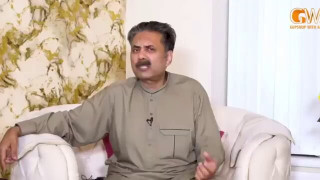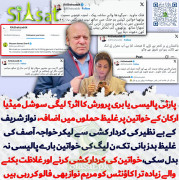
THE AFGHAN Pir 'Pira' Khan Lodi, entitled Khan Jahan, rose to power under Jahangir and became one of his most esteemed amirs. In 1625 he was made governor of the Mughal territories in the Deccan: However, he endangered his position and reputation when he let himself be bribed by the sultan of Ahmadnagar, the Nizam Shah or Nizamulmulk, to cede part of the regions entrusted to his governorship. Khan Jahan fell completely out of favor with Shah-Jahan when he failed to support his succession to the throne. Despite the fact that Khan Jahan suppressed the first rebellion of Jujhar Singh Bundela in 1629, at the beginning of Shah-Jahan's reign, he was recalled from his post as governor of Malwa to Agra. Seeing no way to avert his downfall, Khan Jahan fled the court on 15 October 1629 and joined by several other defectors, made his way through Bundela territory to the court of the Nizam Shah at Daulatabad. Khan Jahan's defection put Shah- Jahan's rule to its first great test because 'nearly all the tribes of Afghans from the bank of the rivers Nilab and Indus to the confines of Kabul and the surrounding countries' were prepared to acknowledge the rebellious Afghan as their leader. The Mughals were, however, able to suppress this uprising at Peshawar and to deal successfully with the Nizamshahis in the Deccan campaign which Shah-Jahan supervised personally from Burhanpur. When the Mughal forces closed in on Daulatabad, Khan Jahan and his followers became distrustful of their ally, the Nizam Shah, and set off towards the north, 'hoping to achieve something in the Punjab with the assistance of the Afghans.' They were hotly pursued by a detachment of Mughal troops. When the Afghans passed through Bundelkhand, Bikramajit, the eldest son of Jujhar Singh Bundela who had previously assisted Khan Jahan in his flight from Agra, wanted to atone for it and attacked the Afghans. Khan Jahan's companion Darya Khan Rohilla was killed and his head sent to court, for which Bikramajit received the title Jagraj ('Lord of the World'). Khan Jahan managed to escape but his flight finally came to an end at Sahenda (Sihanda), north of
****njar, where his Mughal pursuers advanced towards him on 3 February 1631. The Afghan fought valiantly but was killed in action, many of his men perishing with him. The heads of Khan Jahan and of his son Aziz Khan were sent to the court at Burhanpur, where Shah-Jahan had them mounted on the gate of the palace as a warning. The court poet Abu- Talib
****m composed appropriate verses to commemorate the event, and Khan Jahan's captors, Abdullah Khan Firozjang and Sayyid Muzaffar Khan Barha, were suitably rewarded; Khan Jahan's title went to the latter. Mahesh Soni depicts the moment when the royal mace- bearers sever the head of Khan Jahan from his bound body. It appears as if the renegade loses his life at this moment, though in reality he had been cut to pieces earlier in the engagement with the Mughals. The heads of his son and followers are lying on the ground; two more heads of slain Afghans are held by Mughal officers among those who watch the main scene. The leaders of the Mughal force, Abdullah Khan and Sayyid Muzaffar Khan, have dismounted their richly armored horses to preside over the action.
The artist sets the figures in countryside that is recognizably the stereotypical Persianate landscape adopted by the Mughals, namely vertically disposed terrain topped by a rocky formation lined by a row of spectators, but the scheme is now interpreted more realistically and enriched with horizontally layered segments employed to build up the landscape. The ground is thus divided into three ascending zones of varied greens. Mahesh moves the main scene to the foreground, showing the beheading at close quarters to give it more immediacy. We look directly at the head of Khan Jahan, depicted in the profile view to which he was still entitled in this last moment of his life as a high-ranking Mughal official. However, the intersecting arms of his decapitators create a three-dimensional space around him which was the domain in such miniature paintings of unofficial activity, of anonymous or lower ranking persons and - as in this case -of rebels and traitors. This is emphasized by the other heads lying on the ground, seen obliquely and in shockingly realistic detail. The imperial presence is evoked in nature, by the plane tree (chinar) placed above the decapitation scene. As the favorite tree of the Mughals, it is traditionally associated with imperial landscapes.
The viewer is not the only one to witness how imperial vengeance deals with the rebellious. The line of onlookers who hem the contour of the hill act as a kind of chorus. Mahesh Soni adds a second line of more individualized spectators behind the flower strewn mound that forms a tapestry-like backdrop to the key figures. One of them looks directly out at us, as if to call us to witness, and to direct our view toward the main scene.
The eye is caught by the details, such as the meticulous studies of flowers, the sensuous treatment of drapery and armor, and the painter's ability to individualize faces. Mahesh poignantly captures the expression of Khan Jahan between life and death, and confronts us with the reality of extinction in the distorted features of the already severed heads, in particular those lying on the ground, as if to announce decay and the transience of (rebellious) life.
Mahesh's interest in explicitly realistic beheading scenes is similar to that of the followers of Caravaggio. He expresses it with the Mughal's own 'courtly miniature realism' to give the utmost immediacy to the moral lesson of his painting.
This painfully graphic depiction of a beheading is among the most complex and original of all Mughal pictures. We are brought inescapably close to the act of execution, isolated clearly within a complicated grouping of royalist forces, but each of the surrounding figures also demands our alert attention. The characterizations are intensely individualized, and the composition is enriched by the complicated patterns of the armor and textiles. The densely intertwined forms, and especially the stances and hand gestures of the warriors at the bottom, are self-consciously posed, however, suggesting that the artist has seen Northern European works in the style of Etienne de Laune's engraving of 1570, Ad Locutio. The balance of calculation and direct, uninhibited observation gives this work by Mahesh Soni unusual power.
The Rajput whose head is emphasized below the dismounted horseman on the right is Madho Singh Hada, younger son of the Rajput Rao Ratan Hada of Bundi. (It was a spear thrust from Madho Singh that killed Khan Jahan Lodi.) Abdullah Khan Firoz]ang, the other horseman, became famous for this act of beheading, and a series of portraits showing him holding the head of Khan Jahan Lodi are known.






